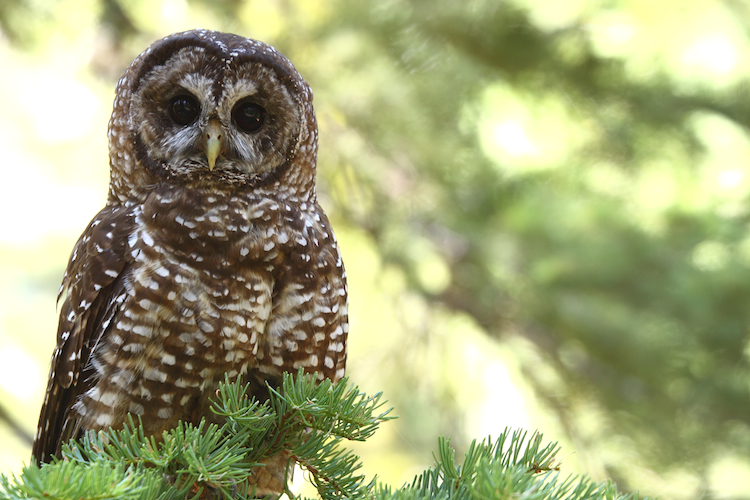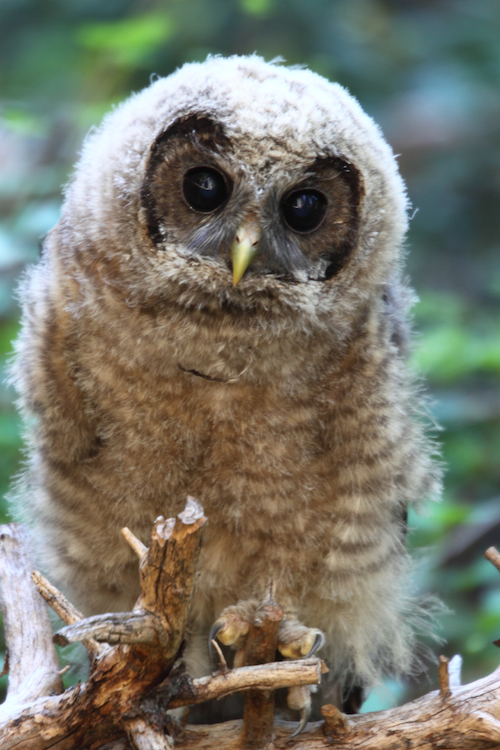
STATUS
Federal: Under Review
State: —
POPULATION TREND
(-) Decreasing
RESTORATION
Intermediate
FAMILY
Strigidae, one of the two owl families
RANGE
Southern California to the western Sierra Nevada Mountains (as far North as Shasta County)
Important Environmental Factors

Moderate to high rainfall (>1,000 millimeters per year)

Tree canopy cover (at least 10%)

Low to moderate warm season temperatures (<20 degrees Celsius)
Appearance
Spotted owls are dark brown with white spots on their head and body. Their brown tails are also barred with white. They are medium sized, with a body length of 16-19 inches, a 3.5-foot wingspan, and a body weight of 1-1.5 pounds.
Habitat and Behavior
California spotted owls can be found in a wider range of forest types than their Northern (ssp. caurina) and Mexican (ssp. lucida) relatives. They have been observed in coniferous forests, riparian and oak woodlands, and, occasionally, in chaparral environments, all of which provide important hunting and nesting opportunities. When hunting, these mostly nocturnal predators sit on perches in the trees and wait to swoop down on prey. California spotted owls are known to mostly feed on woodrats, but their diet can vary depending on where they live [1]. Spotted owls form monogamous pairs and usually mate for life. Instead of building nests, they often use cavities in large, older trees or the broken tops of snags (dead standing trees). Spotted owls have also been found nesting on abandoned raptor or squirrel nests.
Threats
Declines have been observed in some spotted owl populations. Possible reasons include changes in weather and loss of habitat. Logging has been the primary problem, particularly the clear-cutting of old-growth forests that are preferred by the owls. Tree loss can separate the monogamous pairs or cause owls to abandon their home range. It can be difficult to observe immediate impacts from these activities, however, because adult owl pairs do not have offspring every year and can have a delayed response to habitat changes.
Conservation
While the California Spotted Owl is not officially listed as endangered yet, we can look to its close relative, the Northern Spotted Owl (S. occidentalis ssp. caurina), for guidance. For the Northern Spotted Owl, preserving old-growth forest and careful management of timber harvesting have been crucial in recovery efforts [2]. Fire management is also an important part of spotted owl conservation. Spotted owls naturally occur in many habitats that have different fire regimes: some with less frequent fires, and others with high-frequency but low-severity fires [1]. The birds are mobile enough to avoid the fires themselves, but high-severity fires can negatively impact habitat suitability.

Data source:
Species records provided by eBird. 2017. eBird: An online database of bird distribution and abundance [web application]. eBird, Cornell Lab of Ornithology, Ithaca, New York.
Acknowledgements:
We would like to thank Ashley Campfield for her research assistance.
References: